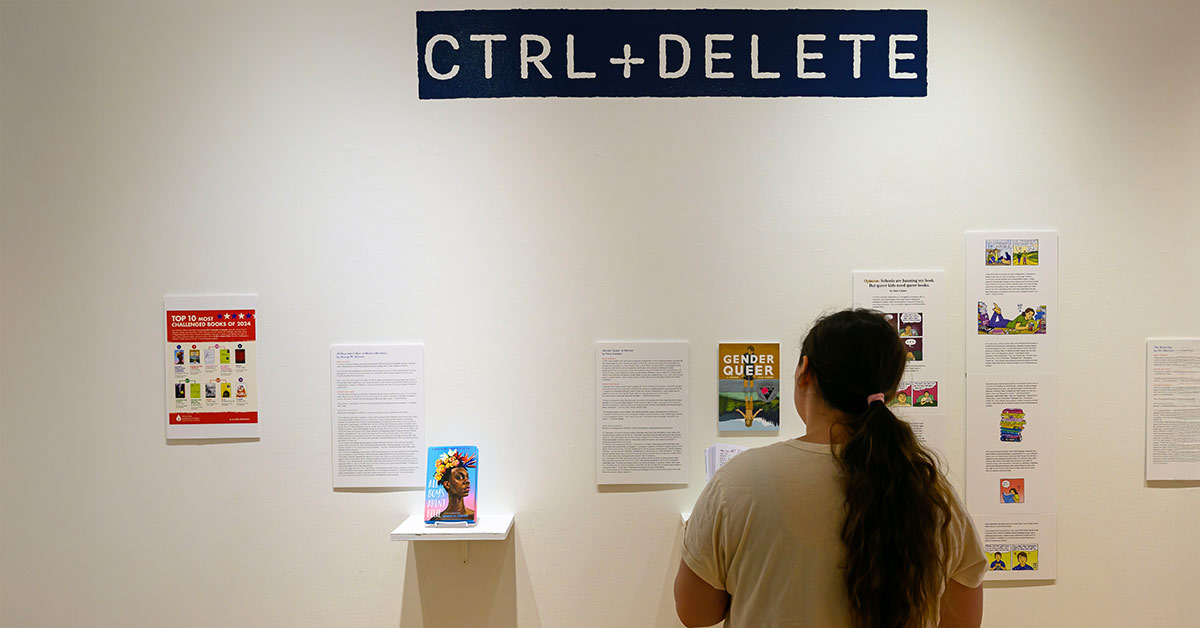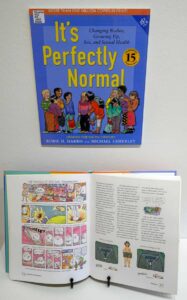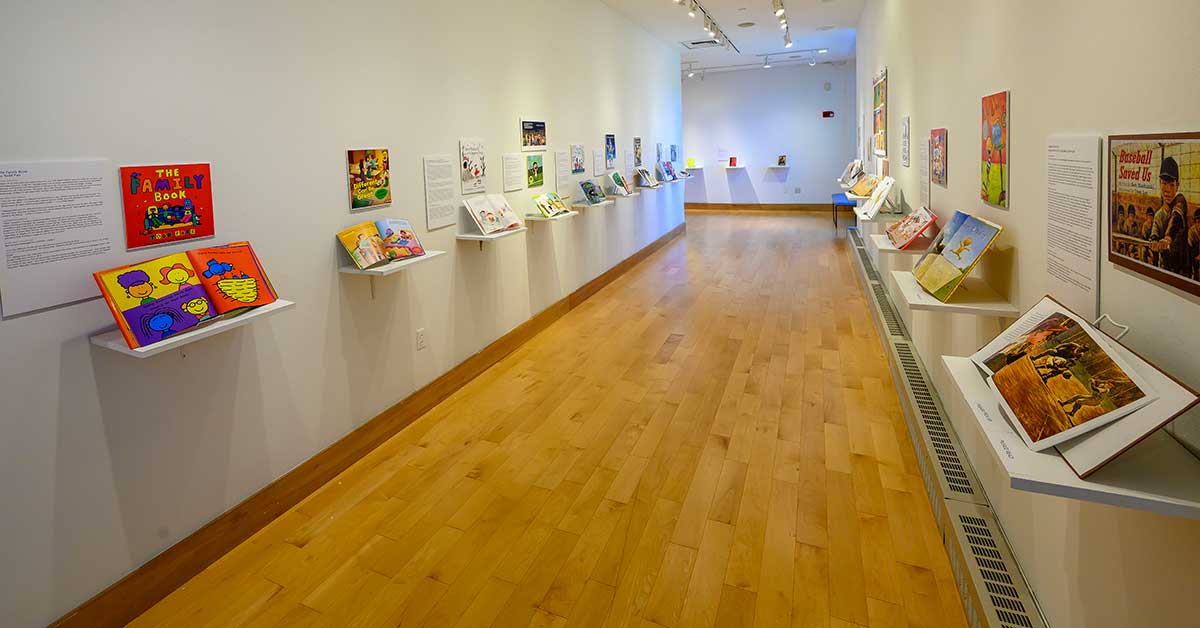A deep dive into book bans and the impact on freedom of expression

From a distance, the display wall facing the entrance of the Beard and Weil Galleries appears blank. Upon closer inspection, columns of words appear, white lettering on a white wall—language that federal agencies have reportedly identified for erasure or as red flags in computerized searches of grant proposals, websites and policies. The barely-legible wall of words illustrates the impact of attempting to erase words and ideas deemed inappropriate by some.

The galleries’ fall exhibition “CTRL+Delete,” a multimedia and interactive presentation, tackles the topic of censorship, offering visitors the opportunity to engage with banned books over time and ponder the often-invisible impact of censorship. It will be on display for the entire fall semester.
“The ability to express ideas freely is central to a liberal arts education and to democracy itself,” said Elizabeth Hoy, the director of the galleries and the curator of the exhibition. “At this moment, schools and higher education institutions, museums and galleries are under tremendous pressure. The recent effort to remove or rewrite material on display at the Smithsonian museums is just one example.”
The U.S. Supreme Court’s June 2025 ruling in Mahmoud v. Taylor may prompt new challenges. In deciding the case, the court ruled that parents should have the ability to opt their children out of an LGBTQ+-inclusive curriculum, which may have far-reaching consequences. The 6-3 decision, based on the First Amendment’s “free exercise of religion” clause, held that if a school’s policies or materials pose a substantial threat to a child’s religious development, the parents must be notified and given an opt-out option.
“What’s really disturbing is that this environment can lead people to preemptively not do or say certain things,” Hoy said. “My goal for this exhibition is to encourage people to look at what we ourselves are censoring, and reflect on this moment as a campus and as a nation.”
Banned books—both historical and recent—form the heart of the exhibition. Books, mostly graphic novels and children’s books, rest on shelves that bear the label “please read” and placards that provide background about the book, objections to the book that have been raised and comments by the authors and the illustrators whose work has sparked controversy. The result is a colorful kaleidoscope of book cover art, each one beckoning the visitor to linger and dig into the stories.

Indeed, many of the books on display include a variety of related treasures, including artist’s original drawings, personal responses to being a banned author and publication proofs. The range of artifacts were contributed by the authors and illustrators themselves. Starting with the American Library Association’s list of banned books, Hoy wrote to each author or publisher for permission to display the books, an effort that started last spring.
The majority of the books on display deal with themes of identity, equality and sexuality and are typically challenged with calls to be removed from schools and libraries. Among the works is an acclaimed best-seller by the late Wheaton alumna Robie Heilbrun Harris ’62. She wrote more than 30 books, including It’s Perfectly Normal: Changing Bodies, Growing Up, Sex, Gender and Sexual Health. NPR called it “one of the most banned books in America.”
Other books featured in the display run the gamut from Flamer, a graphic novel about the experiences of a queer teenager, to Ogilvy, a picture book featuring a bunny who refuses to be pigeonholed by the clothes it wears. As a reminder that censorship and book banning has a long history, the exhibition includes books from Wheaton’s Madeleine Clark Wallace Library that were subject to bans over the past 150 years. These include works by the Roman poet Ovid, Walt Whitman’s Leaves of Grass, and Ulysses by James Joyce—all now considered classics.
The exhibition’s design encourages engagement. It includes the UltraVioletArchive, an interactive library that resists silencing by preserving cultural memory and amplifying suppressed voices. It features soft seating and access to Minecraft’s Uncensored Library—a digital platform where banned texts are freely accessible—demonstrating how artists, activists and technologists are developing inventive strategies to fight suppression. And the show includes a dedicated space where visitors can share their own experiences with censorship, creating an archive that underscores the ongoing relevance of these struggles. Finally, in honor of National Banned Books Week in October, the galleries will sponsor a community reading on Oct. 9 of Frederick Douglass’s speech, “What to the Slave Is the Fourth of July?” (Douglass’ autobiography was banned by an Oklahoma school district in 2022.)
In its first week, the exhibition has generated a great deal of interest. More than a half-dozen Wheaton faculty—from computer science and art to design and education—have scheduled class visits to the exhibit. A large crowd of students also turned out for the opening celebration on Sept. 10.
“There were people reading the books, entering information into our digital archive, exploring UltraVioletArchive and the Minecraft Uncensored Library. It was so great to see,” Hoy said. “Before we opened, I had set up every book in the galleries to be open to a page that highlights the material that led to it becoming a banned book. When I came into the gallery the next day, every book was open to a different page.”

